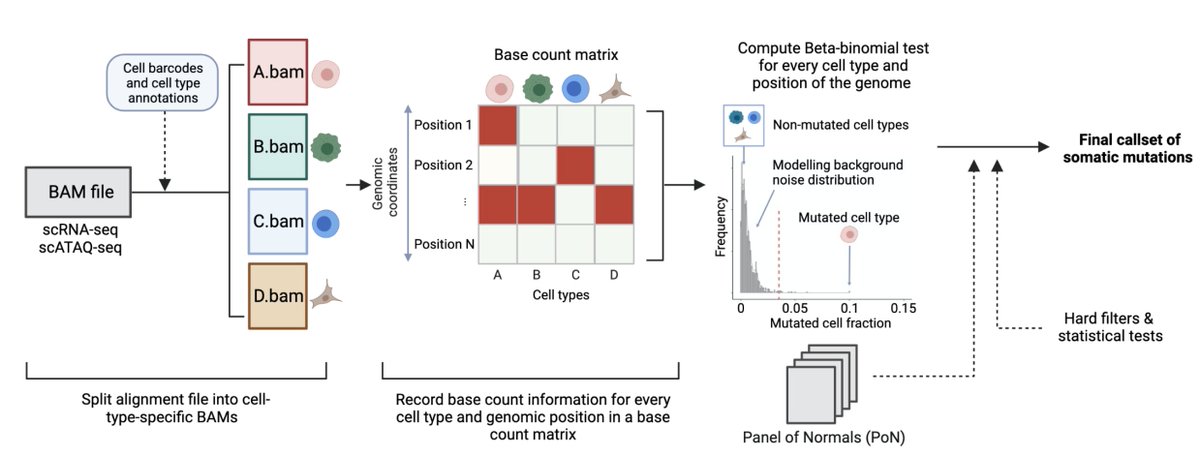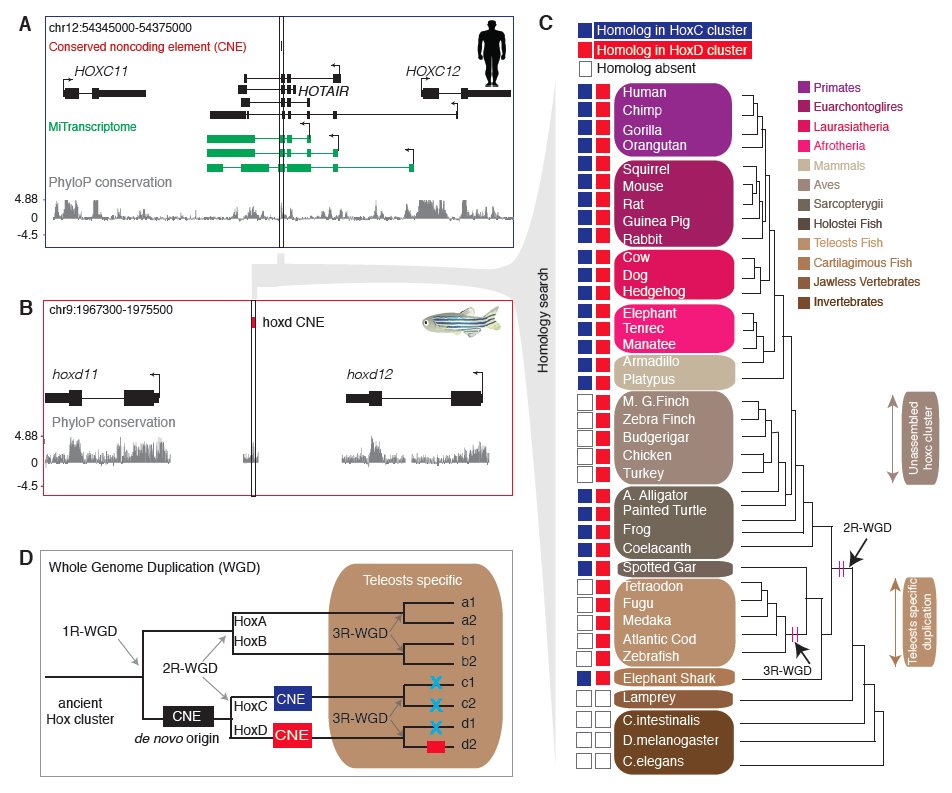Discover and read the best of Twitter Threads about #GTEx
Most recents (4)
We are most happy to present SComatic, an algorithm for de novo detection of somatic mutations in high-throughput single-cell data, including single-cell RNAseq and ATAC-seq. Monumental effort led by @fran_muyas biorxiv.org/content/10.110… Thread 👇 

Context: detecting somatic mutations in single cells is critical to study somatic evolution, cell plasticity, cancer and clonal mosaicism. However, identifying mutations at single-cell resolution is challenging due to various types of artefacts (allelic imbalances, etc).
Detecting mutations in single cells and mapping them to cell phenotypes is even harder, as methods to perform joint profiling of transcriptomes and genotypes do not scale easily and require complex protocols.
Our new work showing "Ancestrally duplicated conserved noncoding element suggests dual regulatory roles of HOTAIR in cis and trans" is out in @iScience_CP cc @UCPHAndersenLab @ferencmueller @BorisLenhard @pundhir_sachin @GroupLenhard @LabMueller 1/N
cell.com/iscience/fullt…
cell.com/iscience/fullt…
Excited to share a new preprint from my & @Pejminister labs: Quantifying genetic regulatory variation in human populations improves transcriptome analysis in rare disease patients biorxiv.org/content/10.110…
We developed a new method, Analysis of Expression VAriation (ANEVA) to model allelic expression data to quantify population genetic regulatory variation for each gene. This was applied in multi-tissue #GTEx data...
Genes with low amount of genetic regulatory variation are enriched for coding constraint and rare disease genes - building a link between intolerance for dosage variation regardless of variation type.
Next at #BoG19: My brilliant student Elise Flynn (@EliseScience) talks about mechanisms of tissue-specificity of cis-eQTLs. Using #GTEx data, focusing on transcription factors.
@EliseScience analyzes tissue variability in eQTL effect size - measured by allelic fold change (developed by @Pejminister) that can be calculated from GTEx eQTLs from 49 tissues, also from ASE data. #bog19
It's common (10%) that eQTL effect size is correlated (pos or neg) with target gene expression across tissues.


